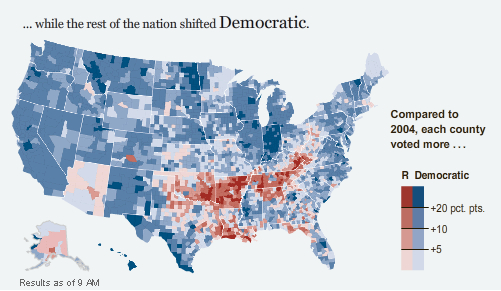How Many People Can the Earth Support?
 What is the maximum number of people that the Earth could support at a minimal level of sustenance?
What is the maximum number of people that the Earth could support at a minimal level of sustenance?
To answer this question, lets look at how much corn is required for a person to survive. Then lets look at how many people could be supported in 4 scenarios: if all current cropland was used to grow corn at current productivity levels, if all current cropland was used to grow corn at US productivity levels, if all human usage of net primary productivity was used to grow corn, and if all net primary productivity on the planet was used to grow corn.
How much corn does a person need a year to survive?
Why corn (maize)?
Corn is the staple food in the diet of many cultures. Worldwide, corn has the highest yield of the major grains at 4,970 kg/hectare (ha) (FAO 2007) compared to rice at 4,152 and wheat at 2,791. There are 158 mil ha of cropland devoted to corn making it second only to wheat (217 mil).
While corn cannot be eaten exclusively as it is missing the amino acids lysine and tryptophan and diets with too much corn can lead to protein deficiency and pellagra, it can comprise the bulk of the diet and the numbers calculated here won't change much with the additional foods needed to supplement the diet.
How many calories does a person need to survive?
According to this calculator a 150 lb, 5'8", 30 year old male living a sedentary lifestyle should eat 2,000 calories daily. The USDA bases their dietary guidelines on a 2,000 calorie diet and it is a rough average of what people eat in a day. The poverty level in India is based on having enough money to buy enough grains to survive which is defined as 2,400 calories in rural areas, and 2,100 calories in the urban area. You might be able to survive on less, but 2,000 calories a day is a nice round number to use. Over a year, 2,000 calories a day comes to 730,00 calories.
How any calories (kcal) are in a kg of corn?
Foundations of Anasazi Culture puts it at 3,476 kcal/kg (88,480 kcal/bushel * 56 lbs/bushel /2.2 lbs/kg). According to An Estimate of the Cost, Energy Ratio and Carbon Balance of Maize Ethanol in New Zealand 3,076 kcal/kg ((610 g starch *4 kcal/g+ 81.7 g protein * 4 kcal/g + 34.4g oil *9 kcal/g). Alternative Fuel - Our future finds 3,650 kcal/kg. A commenter at AutoBlogGreen puts it at 5,280 kcal/kg of field corn (2,400 kcal/lb). Biomass Authroity uses a value of 4,900 kcal/kg (1 bushel of corn can support a person for 52 days at 2,400 kcal/day with 25.4kg/bushel). Lets use an average of these values and go with 3,500 kcal/kg.
How many kcal are in a kg of NPP (as measured in carbon) of corn?
To compare with the net primary productivity (NPP) of Earth, we need to know how many calories corn produces per kg of carbon. According to Source 2: There is 18.3 MJ of energy in 1 kg of dry mass (DM) of biomass. At 239 kcal/MJ, that would be 4,373 kcal/kg DM. Above we used a value of 3,500 kcal/kg of corn. Corn is assumed to have 13% moisture, so that would be 4,023 kcal/kg of DM of corn. This is 8.7% lower than the value being used here, which is fairly close.
Source 2 assumes 2 kg of DM per kg of carbon (C), so 4,373 kcal/kg DM is 8,748 kcal/kgC. Source 2 gives corn a harvest factor of 1.2 meaning that for every 1 kg of corn produced there are an additional 1.2 kg of silage and waste. This harvest factor is very similar to the numbers independently derived from Source 3 which using their terminology would be 1/harvest index * (1+ root shoot) or 1/.53 * (1+.18) = 1.23.
Taking the harvest factor into account there are 3,976, lets call it, 4,000 edible kcal/kg C of corn biomass (including silage and waste).
How much corn/biomass does a person need a year to survive?
2,000 kcal/3,500 kcal/kg of corn = .57 kg of corn/day or 209 kg of corn/yr.
2,000 kcal/ 4,000 kcal/kgC = .5 kgC of corn/day or 182.5kgC kg of corn/yr.
How many people can the Earth support based on the amount of corn they need to survive?
Scenario 1) What if all cropland was used to produce corn at the current productivity level?
Source 4 states there are 15.2 million km2 of cropland (12% of the land on the Earth excluding Antarctica and Greenland). Source 1 states that cropland averages 397 grams of carbon of NPP per m2 per year.
15.2 million km2 * 10^6 m2/km2 * 397 gC/m2/yr = 6,044 billion kgC / 182.5kgC/yr/person = 33.1 billion people.
This calculation gives us a feel for how man people could be supported if all current cropland was converted to corn and that was all that was eaten (no meat or other foods that produce fewer calories per kgC).
Scenario 2) What if all current cropland was as productive as US cropland?
The US is currently able to produce 9,482 kg/ha/yr of corn (FAO 2007, more values from FarmDoc) or 149 bushels/acre (at 56 lbs/bushel and a conversion rate of 62.8 bushels/acre to kg/ha). This is almost double the world average of 4,970 kg/ha/yr of corn.
Converted into NPP, 9,482 kg of corn/ha * (1-13% moisture) = 8,250 kg DM/ha * (1+1.2 harvest factor) = 18,150 kg DM/ha with waste / 2 kg DM/kgC = 9,075 kgC/ha/yr. 9,075 kgC/ha/yr / 10,000 ha/m2 * 1000 kg/g = 907gC/m2. This is 2.3 times as high as the 397 gC/m2/yr of NPP that croplands average around the world.
15.2 million km2 * 10^6 m2/km2 * 907 gC/m2/yr = 13,786 billion kgC / 182.5kgC/yr/person = 77.6 billion people.
This can also be calculated more directly:
15.2 million km2 of cropland * 9,482 kg of corn/ha * 100 ha/km2 = 14,412 billion kg of corn / 209 kg of corn/person/yr = 69 billion people. This value differs from the one above because the kcal/kg of corn assumption is 8.7% lower than the kcal/kg of DM assumption.
Aside: How much land would it take to feed the world's current population?
At the US level of corn productivity, 9,482 kg/ha, and 3,500 kcal/kg of corn, one ha provides 33.1 mil kcal. At 730,000 kcal/yr/person, an ha of corn could feed 45.5 people. To feed 6.8 billion people would take 132 mil ha or 1.32 mil km2 or about 1% of the Earth's surface.
Currently the US has 35 mil ha of cropland in production of corn which would feed 1.8 billion people or 27% of the world's population. The US has 435 mil acres or 174 mil ha of cropland in total. It would take 76% of the US cropland dedicated to corn to provide enough food for the basic sustenance of 6.8 billion people.
Scenario 3) What if all human appropriated NPP was just put towards corn?
Source 1 states that NPP of human harvest was 8.18 PgC. 8.18PgC / 182.5kgC/yr/person = 44.8 billion people. This is likely an overestimate as pasture and forest lands won't be easily convertible to corn and might not yield as much NPP as they did previously.
Source 1 also states that the total human appropriation of NPP was 15.6 PgG. 15.6 PgC / 182.5kgC/yr/person = 85.4 billion people. Beyond human harvest this value includes human induced alteration of land and human induced fires. It is not clear that the loss of NPP due to human alteration could be regained by growing corn on all land, but at the productivity of US corn growers, this would be made up. It is also not clear that forests and other lands that are being burnt down could be replaced with corn for harvest, but if they were this is the value you would get.
Scenario 4) What if all biomass on the planet was used to grow corn?
Source 1 puts the total biomass of actual vegetation on Earth at 59.22 PgC. 59.22 PgC / 182.5kgC/yr/person = 324 billion people.
If all land and all things growing on it was corn and that was used to just feed people, and if you could produce biomass at the same rate growing corn then you could feed 324 billion people. There would be no additional biomass for nature, as all would be used for corn to feed humans.
Conclusion
At the current worldwide level of productivity, and taking all suitable land on Earth for farming and using it to grow corn, and if people needed no additional resources from nature (no meat, cotton, or wood products), then the Earth could support 50 billion people. This is based on Scenario 3, assuming additional land that is currently being used by nature can be repurposed for human use and that some of this land would produce less biomass when converted to growing corn.
If the whole world was able to grow corn with the productivity that is possible in the US, the amount of corn produced would double and number of people the Earth could support would be 100 billion people.
While these are extreme scenarios that would never actually happen, they are instructive to know just what the upper limit of humans on Earth could be if the sole goal was to maximize population.
Caveats
This analysis just looks at land and does not take oceans into account. Adding fish and other forms of seafood would enable a larger population.
The silage and other biomass generated from the corn harvest that isn't corn is treated as waste in this analysis. Source 2 says that 70% of this "waste" biomass from the harvest factor is used to feed animals. The food generated by these animals would allow for a larger population than stated here.
More than just one planting of corn could be grown on the same land over the course of a year. Winter wheat or other crops could be grown as well. This would also increase the size of the potential population.
This analysis also assumes that there is no spoilage or other forms of waste in consumption of food from harvest to eating. One estimate has Britons throwing away 1/3 of their food. Including this would decrease the number of people that the Earth could support.
It also assumes that the US level of production is sustainable, which not all people would agree with. Some see the current style of farming to be a form of soil mining, which cannot go on indefinitely. Fertilizer and pesticides are also made from fossil fuels which are not sustainable, although there is no reason artificial fertilizer couldn't be made sustainably.
This analysis ignores usage of water and fertilizer which could also be potential bottlenecks of producing food.
Sources
1) Quantifying and mapping the human appropriation of net primary production in earth’s terrestrial ecosystems
2) Global patterns of socioeconomic biomass flows in the year 2000: A comprehensive assessment of supply, consumption and constraints
3) Net Primary Production of U.S. Midwest Croplands from Agricultural Harvest Yield Data
4) A comprehensive global 5 min resolution land-use data set for the year 2000 consistent with national census data































